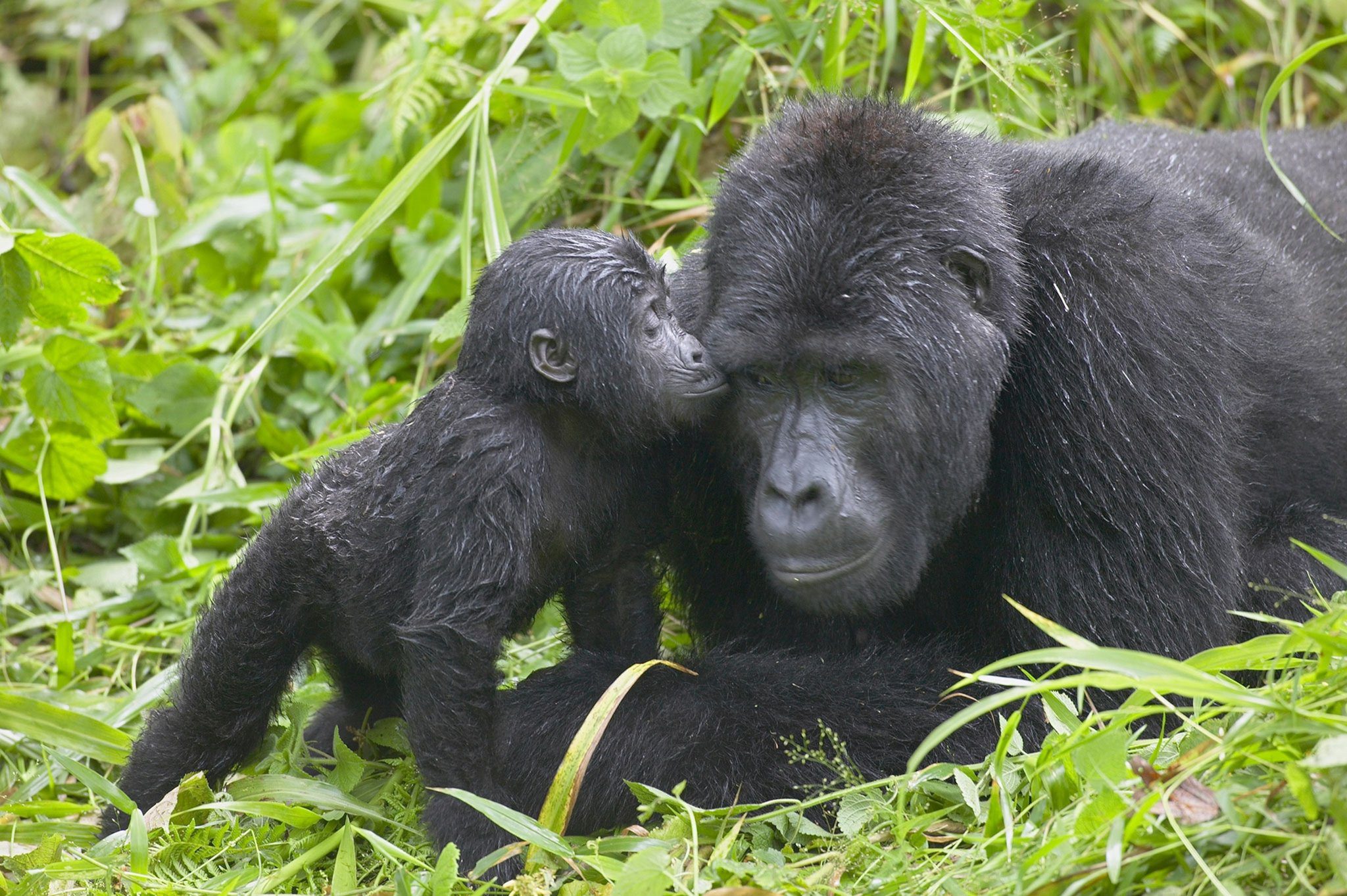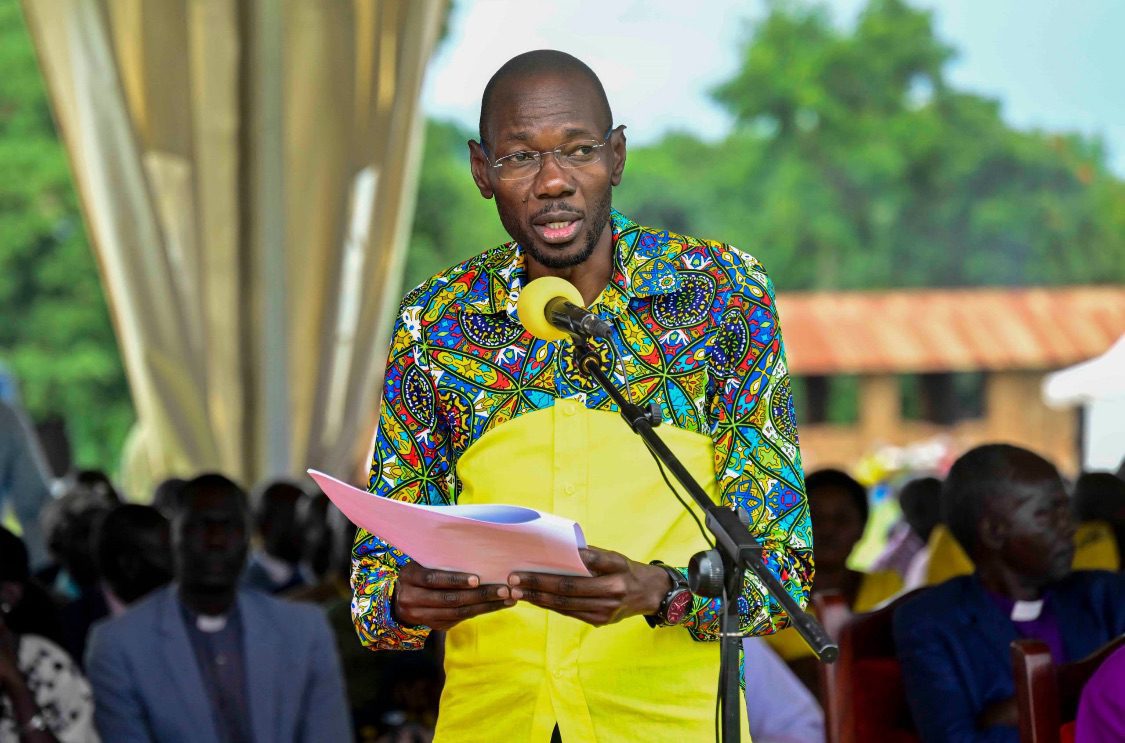
By Paul Kasiita — Kampala, Uganda
The Executive Director of the Uganda Wildlife Authority (UWA), Dr. James Musinguzi, officially launched the Bwindi-Sarambwe mountain gorilla and inaugural chimpanzee census 2025 at the Institute of Tropical Forest Conservation (ITFC) in Ruhija, Bwindi Impenetrable National Park, on May 6, 2025.

Key partners, including the Rwanda Development Board, Greater Virunga Transboundary Collaboration, Jane Goodall Institute, WWF Uganda Country Office, Gorilla Doctors, and several other organizations, attended the launch ceremony. Dr. Musinguzi flagged off the census team, emphasizing the importance of collaboration in conservation efforts.

Significance of the Census
This is the sixth mountain gorilla census, with the first conducted in 1997. The census, normally conducted every five years, aims to track the population and inform conservation strategies. The last census in 2018 recorded 459 mountain gorillas, and the 2023 census was rescheduled to 2025 due to COVID-19.
A team of over 60 trained personnel, 70% of whom are from UWA, will conduct the census using nest count and genetic analysis methods over two sweeps: the first concluding in June and the second in September.
Importance of Mountain Gorillas
Mountain gorillas (Gorilla beringei beringei) are the largest living primates, found only in East and Central Africa. They are crucial for tourism, contributing over 60% of UWA’s internally generated revenue. Uganda is home to over half of the world’s mountain gorilla population, found in the Virunga Mountains and Bwindi Impenetrable National Park.
Conservation Efforts
To minimize the spread of human diseases to gorillas, conservation teams and governments have implemented stringent procedures, including health monitoring, controlled visitor numbers, and maintaining a safe distance.
What You Need to Know About the Mountain Gorillas
The mountain gorilla (Gorilla beringei beringei) is the giant primate (great ape), a subspecies of the eastern gorilla only found in East and Central Africa. It is the biggest living primate. It is larger, more powerful, and has thicker, longer fur than other gorilla species, allowing it to survive only in harsh environments at high altitudes and in extreme cold. Like human thumbprints, the mountain gorilla has a nose print unique to each individual.

The mountain gorilla is the most threatened race to extinction and the only gorilla species found in Uganda. Uganda has over half of the world’s mountain gorilla population found on the Virunga Mountains slopes in Mgahinga National Park and Bwindi Impenetrable National Park. Mountain gorillas live only in high-altitude montane and bamboo forests, between 8,000 – 13,000 feet (1,400 m to 3,800 meters), surrounded by human settlements.
Relation to Humans
The mountain gorilla is 98% genetically similar to a human. Yet, it hasn’t developed the necessary immunity to common human diseases, making it vulnerable to human illnesses. Even a simple cold can negatively impact the gorillas’ health. Gorilla tourism is mainly why these creatures have a slim chance of surviving extinction in the first place. So conservation teams and governments have stringent procedures to minimize the spread of human diseases to these precious creatures. Some measures include health monitoring, habituating them for tourism, controlling the number of visitors, keeping at least 10 meters from them, and wearing a facemask during visits.

Life Span
Mountain Gorillas have an average lifespan of 35 years in the wild.
Size
Mountain gorillas are the bulkiest and most powerful living primates. An average male mountain gorilla can weigh 136 to 230 kilograms (300 to 485 pounds) and reach a standing height of 4 to 6 feet (1.2 – 1.8 meters).
Diet
Mountain gorillas spend a quarter of their day eating a vegetarian diet, primarily including roots, shoots, leaves, fruit, wild celery, tree bark, and pulp. In the thick forests of Uganda, Rwanda & DRC, troops find plentiful food for their vegetarian diet. They supplement their plant-based diet with raw protein from snails and ants, and their source of sodium is tree bark. An adult male mountain gorilla can eat up to a whopping 34 kilos (75 lbs) a day, and a female up to 18 kilos (40 pounds). They must walk on all fours to support their fat, heavy bellies and spend more time sitting, grooming, farting, fornicating, and socializing to allow digestion.
Nightlife
At night, mountain gorillas sleep together in temporary nests on the ground or in trees built for just that night from foliage. Infants will share their mother’s nests for safety.
Social Life of a Mountain Gorilla
Most mountain gorillas live in stable family groups (called troops or bands) of around 10 – 40 individuals, with one dominant male (named a silverback) and several females.

The silverback is responsible for the family’s well-being, including finding good foraging spots, defending them from intruders, managing family feuds, finding secure nesting spots, and patroling a home range of 0.75-to 16 square miles.
Those who challenge this alpha male are apt to be cowed by impressive shows of physical power. He may stand upright, throw things, make aggressive charges, and pound his massive chest while barking out powerful hoots or unleashing a frightening roar.
Despite these displays and the animals’ evident physical power, mountain gorillas are generally calm and nonaggressive unless someone/something threatens them.
In the gorilla group, both males and females care for their infants, hugging, carrying, and playing with them. When they get older, most males and around 60% of females leave their birth group to join another troop, which helps prevent inbreeding.






 ">
">
